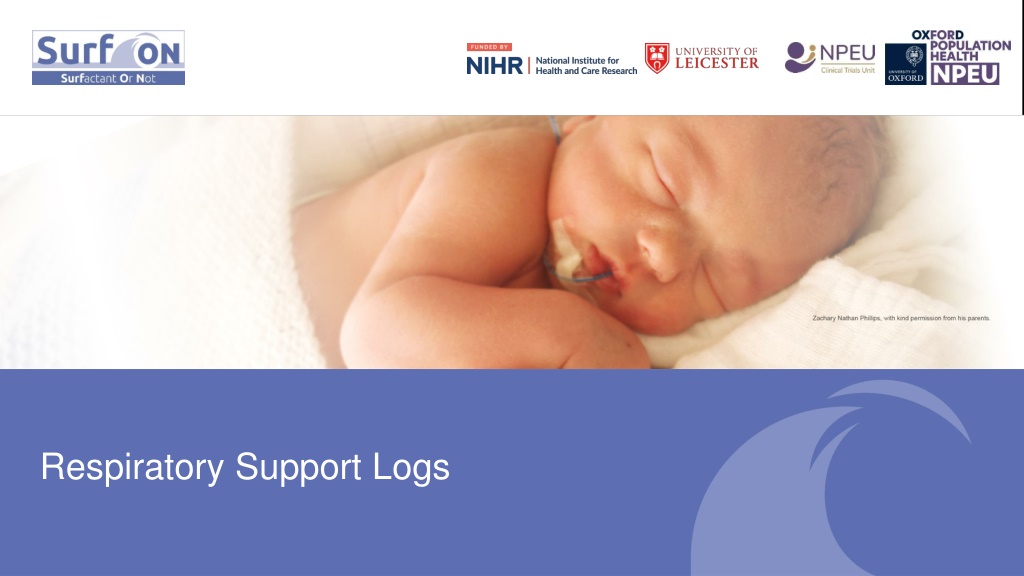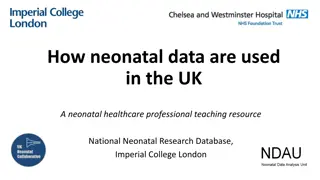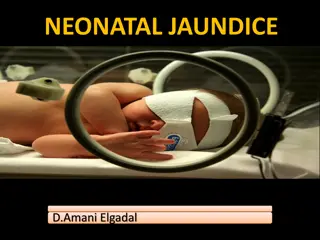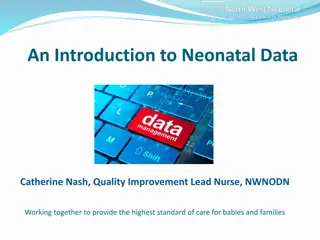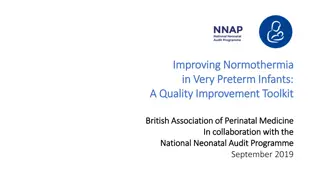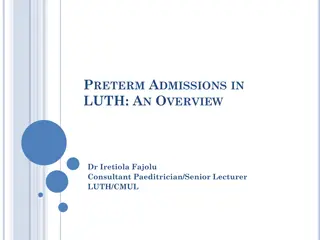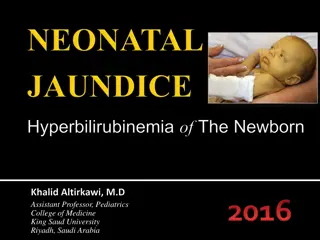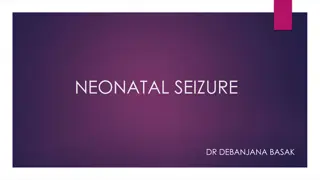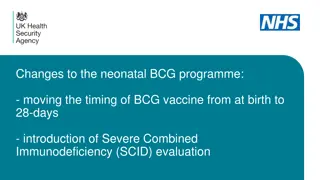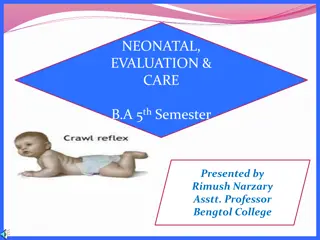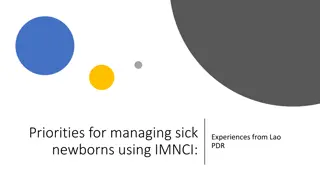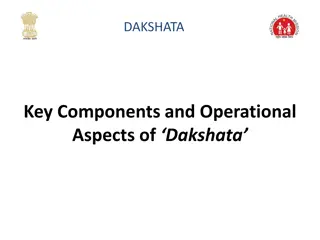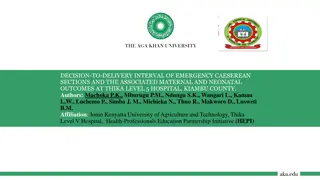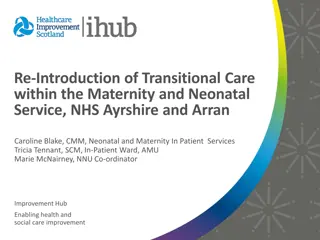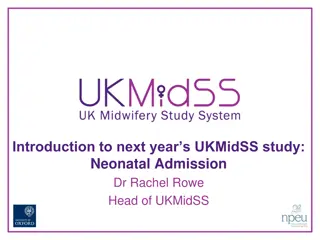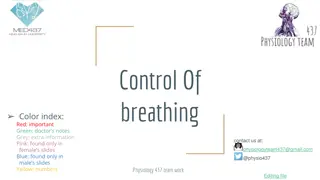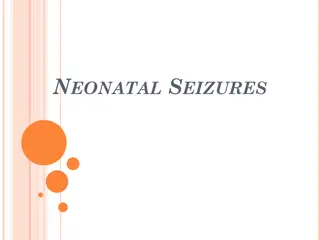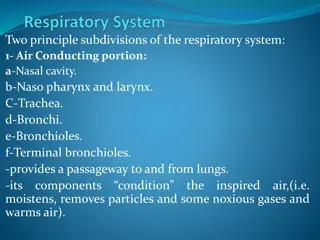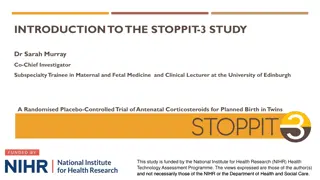Neonatal Respiratory Support Study Overview
This study focuses on evaluating the primary outcomes of length of hospital stay post-birth and incidence of severe respiratory failure in infants receiving respiratory support. Detailed logs are maintained daily until the infant is off respiratory support or discharged. The study is funded by NIHR. Information on randomization, entries, respiratory support types, and oxygen requirements is crucial for tracking and monitoring infants' progress.
Download Presentation

Please find below an Image/Link to download the presentation.
The content on the website is provided AS IS for your information and personal use only. It may not be sold, licensed, or shared on other websites without obtaining consent from the author.If you encounter any issues during the download, it is possible that the publisher has removed the file from their server.
You are allowed to download the files provided on this website for personal or commercial use, subject to the condition that they are used lawfully. All files are the property of their respective owners.
The content on the website is provided AS IS for your information and personal use only. It may not be sold, licensed, or shared on other websites without obtaining consent from the author.
E N D
Presentation Transcript
Primary Outcomes 1. Length of infant s hospital stay after birth, defined as, the number of days from birth to discharge home from hospital 2. Incidence of severe respiratory failure, defined as, sustained ( 30 minutes) requirement for FiO2 0.45 to maintain SaO2 92% This study is funded by the National Institute for Health Research (NIHR) [Health Technology Assessment (HTA) (project reference 17/89/07)]. The views expressed are those of the author(s) and not necessarily those of the NIHR or the Department of Health and Social Care.
Respiratory Support Logs Reports the primary outcome of the study and kept next to infant s cot for ease of completion. Completed for all infants that are randomised onto the trial regardless of the study arm they are randomised to. They are maintained every day until the termination of all respiratory support and the infant has completed 24 hours breathing in air after the removal of respiratory support or until the infant is discharged home, whichever occurs first. This study is funded by the National Institute for Health Research (NIHR) [Health Technology Assessment (HTA) (project reference 17/89/07)]. The views expressed are those of the author(s) and not necessarily those of the NIHR or the Department of Health and Social Care.
Lets look closer Day 1 is the date of randomisation and is usually the same day as the DOB or the day after. Add study number and DOB in the correct fields, if wrong information is added, please GCP correct it For multiple births, twin 1 and twin 2 can be written for ease along with the study number but separate logs should be maintained for each twin.
The log runs on a four hourly basis from 00:00 to 23:59 hours. The first entry should be entered once the infant has been randomised onto the correct time interval. Please note that this is not always the first box on the time interval column An entry is made every 4 hours and this can be done by any trained site staff. The person completing the entry is not required to be on the delegation log.
The second column requires you to tick the type of respiratory support the infant is on in the given time period. Please tick all the respiratory support type that applies for that specific time period. If infant is not on any respiratory support, breathing in air needs to be ticked.
The third column records oxygen requirement and reports on the primary outcome of the study. The fourth column records surfactant administration. If you answer yes to this question, please remember to complete the surfactant form on OpenClinica. Please refer to the OpenClinica training video to obtain more information on how to complete the surfactant form. https://www.youtube.com/watch?v=tX2McF1gsMA
It is important to note that a single intervention dose of surfactant given to those infants randomised to the early surfactant therapy a the time of randomisation is not recorded in the surfactant administration column. This is because details pertaining to the single dose of surfactant is collected on the trial intervention form.
Once all the relevant information has been entered, the person completing the entry should write their full name clearly on the far right column, this person is not required to be on the delegation log. Please note, initials and signatures should not be used in order for clear identification of the individual completing the entry.
Once log entries have been completed, the entries should be checked for completion and signed off by a trained and delegated member of staff for each 24-hour period. This means every single page on the respiratory log should be checked, signed and dated by a delegated member of staff.
Insert sheet numbers at the bottom as completion of the sheet numbers occurs. In events where a respiratory log is required for more than 7 days, please use a new respiratory log to record this information. If you need us to send you extra copies of the respiratory logs, please email us at surfon@npeu.ox.ac.uk
Examples In this example, the infant was randomised on 08/06/2020 at 10:32. Therefore, the time of randomisation falls between 08:00 and 11:59.
Gemma Collier As the infant was randomised at 10:32, the first two time intervals on the respiratory log would be left blank as details pertaining to respiratory support are only recorded after randomisation. The person entering the data has to enter their name on the right column to indicate that the fields have been left blank for a specific reason. Emily Clarke Ryan Peters Gemma Collier Gemma Collier Gemma Collier Lead Research Nurse
In this example, infant was randomised to the early surfactant group but needed an additional dose of surfactant as per the attending clinician s decision therefore the individual completing the data has indicated surfactant has been administered and a surfactant form should be completed on OpenClinica to collect the details of the additional surfactant dose.
When to stop recording If the infant has no respiratory support including additional oxygen, you can select breathing in air under the respiratory support column to report this. If the infant has been breathing in air for more than 24 hours (six time intervals), recording of the respiratory log can be stopped. However, it must be restarted if further respiratory support becomes necessary.
Filing & Data Entry Once the infant has been discharged home, the paper logs can be filed in the SurfON data collection file. However, the entries from the paper log must first be entered onto OpenClinica by a trained and delegated individual. Please ensure, the information added onto OpenClinica is exactly the same as the information recorded on the paper log. Please note that the date and time of the first day will be auto-populated based on the date and time information from the randomisation website.
Common errors Delegated person not signing and dating each page of the respiratory logs. Individuals completing entry are just signing or writing their initials on the column. Please print full name. Data added onto OpenClinica doesn t match the paper versions Recording of the logs being stopped before the infant is breathing in air for 24 hours. Changing data without GCP correction on the paper versions. Completion of respiratory log not restarted if baby goes back on support after breathing in air >24hours.
Remember to send us the copies of respiratory logs for your first 10 recruits
Any Questions??? Questions can also be emailed to surfon@npeu.ox.ac.uk
